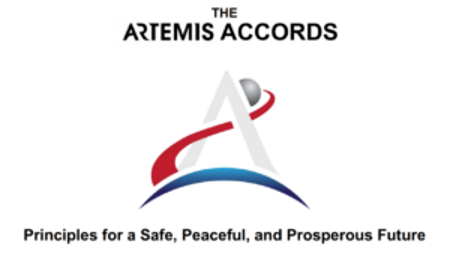May 16, 2020 – Yesterday NASA established a new set of rules to govern the future lunar landings planned for the Artemis Program. Stated Mike Gold, NASA associate administrator, “We don’t want to only carry astronauts to the Moon, we want to carry our values forward.”
Called the Artemis Accords and described as being founded upon the principles first established in the Outer Space Treaty of 1967, the American space agency intends to have anyone who partners with it on Artemis and future lunar exploration sign bilateral agreements that establish the rules for exploration, and commercial exploitation of the Moon, and by extension Mars or any other destination NASA chooses to visit or exploit in the coming decades.
The Accords principles include:
- All activities will be conducted for peaceful purposes
- Full transparency will govern all announcements of policies and plans
- Open international standards of interoperability will allow for multiple nations to participate
- All signatories will pledge to render assistance to astronauts or missions in distress
- All space objects will be registered to avoid potential conflicts versus public or private use
- All data and scientific discoveries will be publicly disclosed
- Existing historic sites and artifacts will be protected (Apollo and robotic landing sites and equipment)
- Extraction and use of space resources will be governed by the articles of the Outer Space Treaty
- Notification and coordination on disclosure of location of activities will be required by all signatories
- Space debris mitigation will be practiced by all signatories based on UN guidelines
More than 100 countries to-date have signed the Outer Space Treaty which stipulates that we are to leave our human conflicts down here on Earth and peacefully engage with each other in space. A follow up treaty in 1979 has garnered few signatories. And no nations as of yet have agreed to the NASA Artemis Accords.
Companies are not signatories to the Outer Space Treaty, a challenge when you consider SpaceX was founded to establish a permanent human presence on Mars by mid-century, and other commercial operators like Bigelow Aerospace hope to put hotels and even private space stations in near-Earth orbit. When will these for-profit businesses become signatories of the Outer Space Treaty, other agreements, and the Artemis Accords?
Artemis is more than a NASA project although the astronauts who will first land on the Moon will be exclusively American. Other national space agencies are contributors, as are a number of commercial companies. Part of Artemis includes three companies which have been asked to provide plans for a lunar lander. And although the final design will be operated by NASA astronauts, these will be commercial products.
Some of the experiments NASA intends to put on the lunar surface both before a human return to the Moon and after will also be commercial built and delivered. It is not clear if the Artemis Accords govern these companies when the build and operations are on behalf of NASA exclusively, or do they govern them when they do their own thing? SpaceX is the obvious outlier in that equation.
How has Russia reacted? Head of Roscosmos, Dmitry Rogozin, was dismissive describing the Artemis announcement as a “principle of invasion” that is “bypassing the UN and even NATO.” NASA spokespersons have not yet reached out to Russia to become signatories but hope the Russians would want to join in acknowledging the principles being undertaken. The issue of whether China will be invited to sign on to the Accords remains pending.
The biggest challenge to the principles in the Accords as written is the use of space resources and sites from which mining or extraction occurs. Will such locations be held in common or be owned by NASA, another national agency, or a commercial operator? And what happens if the product being extracted, let’s say ice from the moon or Mars is found to contain biology? Will the lack of a Artermis Accords principle to do no harm lead to the destruction of extraterrestrial life?








